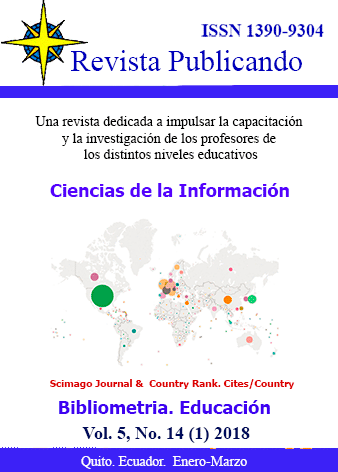Abstract
The goal of this research is evaluation Islamic Azad university of Qom as the learning organization from the view point of the Academic members. The method of this research is descriptive – survey, the statistics population were the Academic members and kind of statistic, contain 105 persons that selected simple randomly .For gathering and collecting data, we use MARQOART learned organizational evaluation qoestionary with the conclusion of 0.85 in with it contains 49 questions in the field of four level. The analysis of information on the basis of the descriptive method fundations and inferring examination (Z) with one group and analyzing the one- way variance (F) that showed:
1.from the view point of scientific Academic members ,Islamic Azad university in none of the qualifications of organizational movement ,dynamic learning and hopping up people ,using technology, if doesn”™t have a complete readiness to changing into learned organization.2- Between the rate of Islamic Azad university readiness of change into learned organization from the view point of different kind of knowledge management ,dynamic learning ,using technology ,super charging or hopping up people and organizational changing ,there is not any meaningful difference.
References
Arasteh,Hamidreza and Enayati, Taraneh(2009), assessing the status of Islamic Azad Universities according to the learning organization characteristics. Higher education ,magazine 3(2).47-63
Allen, Rading (2000). Knowledge Management: Succeeding in the Information based Global Economy (translation by Mohammad Hussein
lotfi) Tehran: Samt.
Arabi,Mohamda and Izadi,Davood (2000). Dynamic organizations, scientific education. Tehran: Cultural Research Center.
Alvani,Mahdi and Danaei fard,Hassan(2009), reform managmenet in organizations,Tehran ,Saffar pub.
Bani si,Parinaz and Malekshahi,Alireza(2010) Investigating the Role of Learning Organization on secondary schools of Amol, Managers”™ Knowledge Management, Quarterly Journal of Education Management Research, 1 (2), 137-147.
Bani si,Parinaz and Esmail SAhme , Maryam (2010), Investigating the Relationship between the Dimensions of the Learning Organization and the Effectiveness of the directors of Secondary Schools in district 4 of Tehran. Quarterly Journal of Thoughts in Educational Sciences. 2 (19), 9-71.
Parsa, Mohamad (1992), Educational Psychology. Tehran; Sokhan.
Hassanzadeh,Ramezan(2004), Research Methods in Behavioral Science. Tehran.
Hamidizadeh,Mohamadreza and Ashrafizade,Azadeh(2010), Assessing the readiness of Iran University of Medical Sciences to become a learning organization, Quarterly journal of research in educational systems, 4 (8), 61-81.
Zabihoon,Shahla and Yusefi ,Alireza(2007), Adaptation of the characteristics of the Education Organization of Isfahan with the characteristics of the learning organization from the teachers' point of view in three areas of individual, group and organizational, Knowledge and Research in Educational Sciences - Curriculum planning, 13 (21), 125-144.
Zare,Hossein and Rajaeipour,Saeid and Jamshidyan ,Mahdi and Molavi,Hussein (2006), Learning organization ,a model for today's university leadership. Esfahan: Jahad Daneshgahi.
SobhanineZhad Mahdi, Shahabi,Behnam and Youzbashi,Alireza (2010). Learning organization .Tehran,Yastran.
Shahlaei, Nasser and Kheirandish, Mehdi (2010). Assessment of the readiness of active organizations in the aeronautical industry to convert them into a learning organization. 1 (12), 65-73.
Safaniya, Mohammad Ali (2015). The relationship between learning organization and organizational readiness for change in the experts of the Ministry of Sports and Youth, 3 (2), 30-42.
Atafar, Ali and Samani Mozhgan, (2009). The use of the learning organization components in State university and Islamic Azad university of Shahrekord, Iran Journal of Higher Education. (1), 161-179.
Ghorbani,Vajhollah (2008). Organizational Learning and Learning Organization with Attitude to Knowledge Management. Tehran; Baztab.
Ghorbani,Vajhollah (2008). Making and validating a scale to measure the characteristics of learning organizations. Management Studies in Iran (Lecturer in Humanities). 13 (2), 209-238.
Marqoart, Michael j. (2006), the principles of learning organization (translated by Mahdi Irannezhad parizi.Tehran,Modiran
Hashemi, Seyyed Hamed and Hashemi, Saeedeh (2010). Gaining competitive advantage by creating a learning organization and knowledge management. First Conference on Organizational Intelligence and Business Intelligence.
Hodkinson, p.(2006).Toward Universites as learning organization, Journal of theLearning organization.5. 5, 228.
Bradley Jorgensen, (2004). Individual and organizational learning: a model for reformfor public organizations, Foresight. 6 .2, 91 – 103.
Murray, p.(2003). Organizational learning economics & firms performance, empiricalobservation, , Journal of the Learning organization.10. 5, 305- 316.
Paterson, G.(1999) .The learning University, Journal of the Learning organization .6.1, 9.
Sakalas.A. and Venskus , R. (2007). Interaction of Learning organization and organization structure. Journal of Engineering Economics Vol.53, No.3, 65-69.
Berrio, A.(2006). Assessing the learning organization profile of Ohio State University: extension using the system-linked organizational model. www.cienceas.online ,3.7, 30-46
-Kinder, T. (2002). Are schools learning organization? Journal of Teach, 22 . 6, 385-404.
Kiedrowski PJ. Quantitative assessment of a Senge learning organization intervention Learn Organ2006;13(4):369-83.
Neefe, D.(2001). Comparing levels of organizational learning maturity of colleges and Universites particibating traditional and non-traditional (Academic quality improvement project) accreditation processes, Unpublished thesis.
You are free to:
Share — copy and redistribute the material in any medium or format.
Adapt — remix, transform, and build upon the material.
The licensor cannot revoke these freedoms as long as you follow the license terms.
Under the following terms:
Attribution — You must give appropriate credit, provide a link to the license, and indicate if changes were made. You may do so in any reasonable manner, but not in any way that suggests the licensor endorses you or your use.
NonCommercial — You may not use the material for commercial purposes.
ShareAlike — If you remix, transform, or build upon the material, you must distribute your contributions under the same license as the original.
No additional restrictions — You may not apply legal terms or technological measures that legally restrict others from doing anything the license permits.
